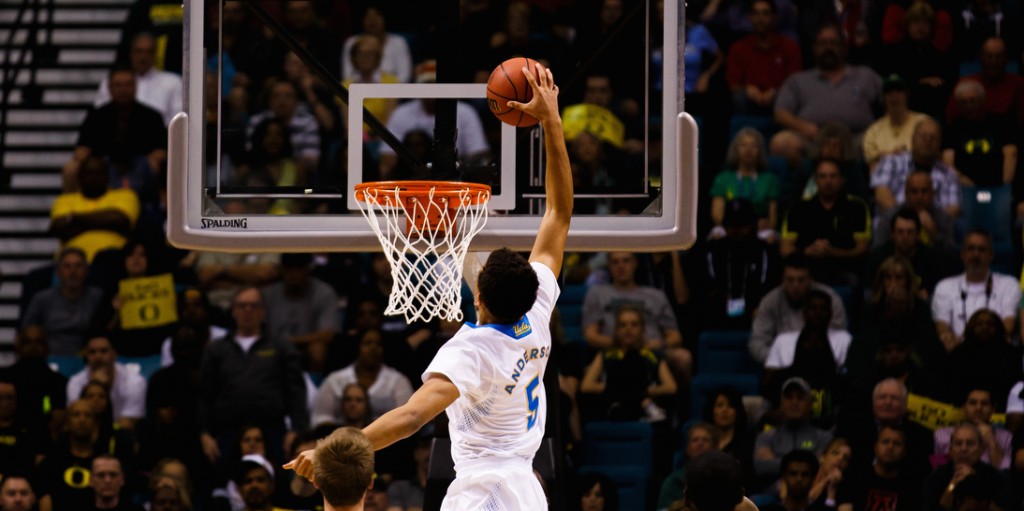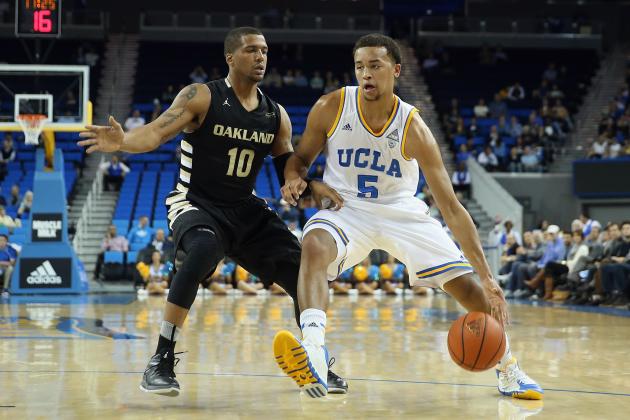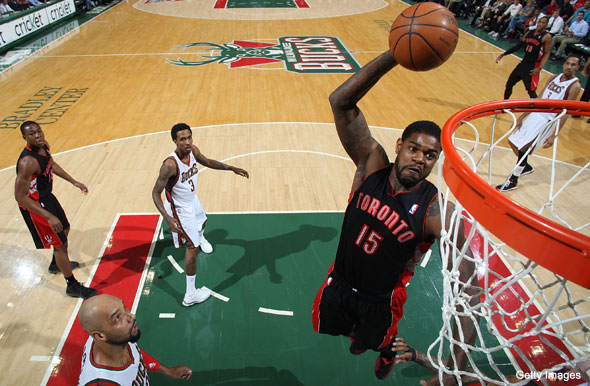As I wrote at the beginning of the NCAA tournament, based on stats alone, Kyle Anderson would be a top 5 pick in the draft. He fills a stat sheet like a young Scottie Pippen, is 6’8 with a wingspan of nearly 7’3, handles the ball and passes like a point guard (which he played almost exclusively), and shot an impressive 48.3% from the three point line this year. But Anderson does have his weaknesses.
Anderson is below athletically, has trouble beating his man off the dribble and turns the ball over at a very high rate. And while he shot the ball well, this season, his release is almost painfully slow, which obviously worked in college, but probably won’t in the NBA.
That’s one of the big questions about Anderson. How will his skills translate to the NBA? In college, he was able to make up for his lack of athleticism and slow shot release with his great size. In the NBA, where players are longer and quicker, that’s not going to work. Watch these highlights from one of his better games this past season.
All his skills are on display, but so are his weaknesses. When he gets into the lane, the only reason he’s able to get his shot off is because he’s usually taller than the man defending him. That’s not going to be the case in the NBA. He often looks like he’s going in slow motion when he drives to the hoop. And while he’s played point guard his entire career, he’s projected as a small forward for the NBA because he simply wouldn’t be able to defend even the slowest point guards at the NBA level.
Speaking of defense, he does use his length to disrupt the passing lanes and block some shots, but he has such poor lateral quickness he gets killed defending on the perimeter, even at the college level, and despite weighing 230 lbs is actually pretty weak defending the post.
Normally, this would definitely be enough to turn off most teams, but what intrigues me about Anderson is that he has never appeared as thought he’s ever been in very good shape. In fact, at the recent NBA Draft Combine, Anderson’s body fat was measured at 13.4%, which is good for an average person, but not for a professional athlete.
In this way, Anderson reminds me of another UCLA alumni, Kevin Love. Love displayed below average athleticism in college, and there were a lot of questions about whether he would be able to finish over big, more athletic players in the NBA. And his body fat was measured at 12.9, only slightly better than Anderson.
After declaring for the draft, Love lost weight, improved his conditioning, athleticism and strength and is now one of the best players in the league.
Anderson doesn’t have Love’s potential, and Love displayed a hustle and passion that certainly helped him reshape his body, but if Anderson dedicates himself to improving his body, he could end up surprising many on the next level.

Anderson isn’t guaranteed to be available at 20, as he’s projected as high as 17, but most mock drafts have him going after 20, at this point. And it’s difficult to see the Bulls or Phoenix drafting him (who hold 3 of the 4 spots before the Raptors).
If he’s available, he would be a good fit for the Raptors. He’s obviously not athletic, but his cerebral and unselfish game would compliment a starting unit that doesn’t always make the best decisions on the court. His presence would allow Kyle Lowry (if re-signed) to focus a little more on scoring, and would take away much of the ball handling duties of DeMar DeRozan.
Sharing the wing position with DeRozan would cause defensive problems, though, as neither are even average at stopping their man on defense.
Unfortunately the perfect solution isn’t likely to be available at 20 (otherwise they would go higher), so Anderson might be a good gamble for the Raptors to take. Ideally, Anderson would be paired with a shoot-first point guard that would allow him to run the offense and not have to run after the smaller, quicker point guards on defense.




